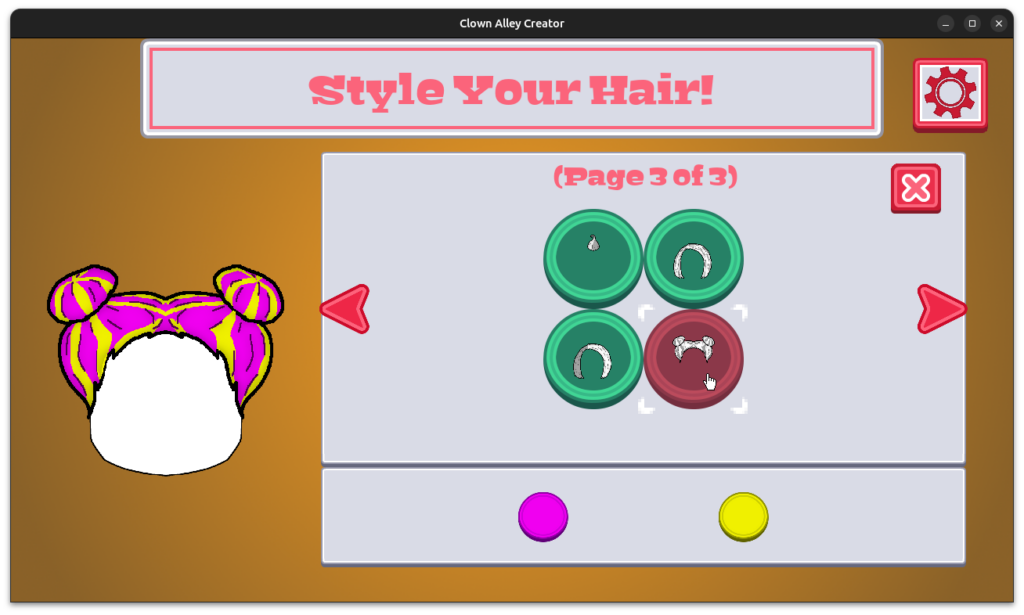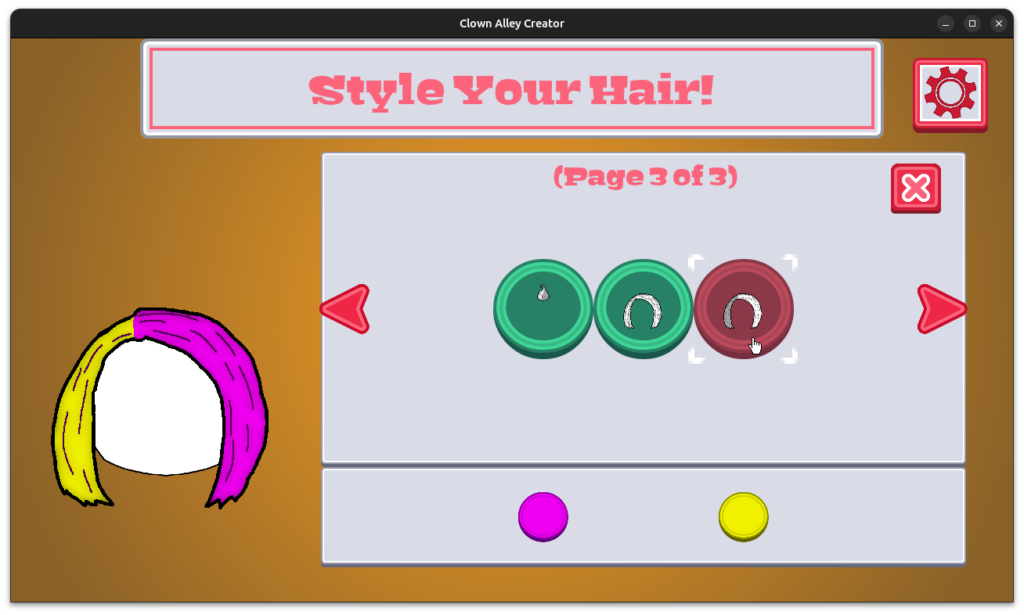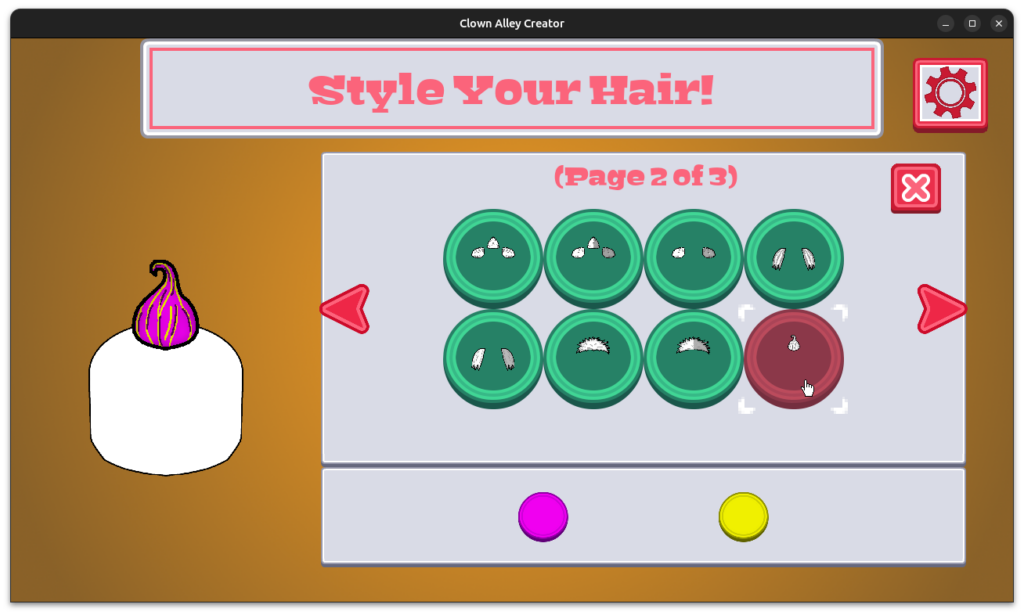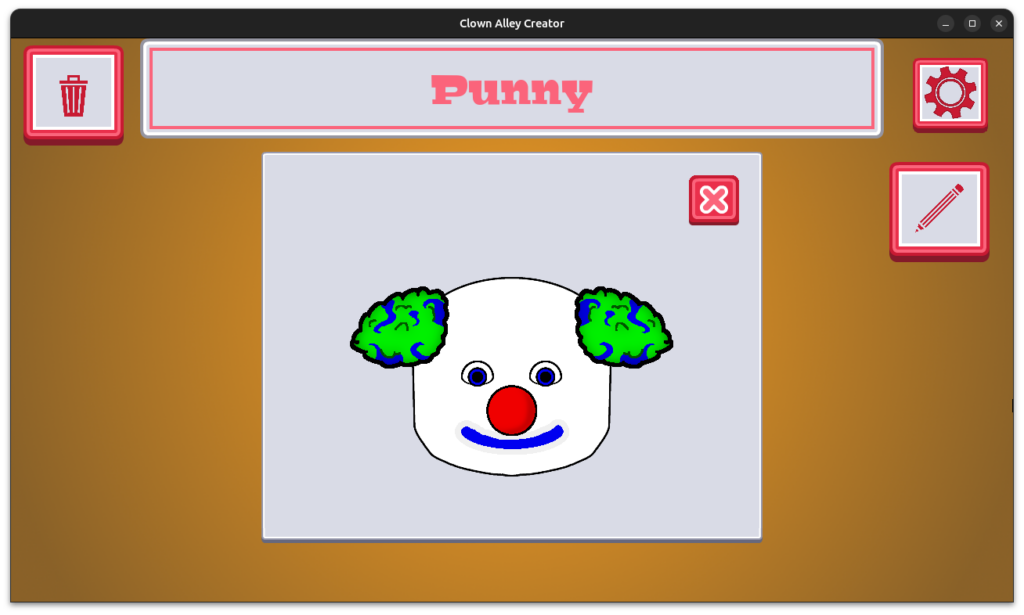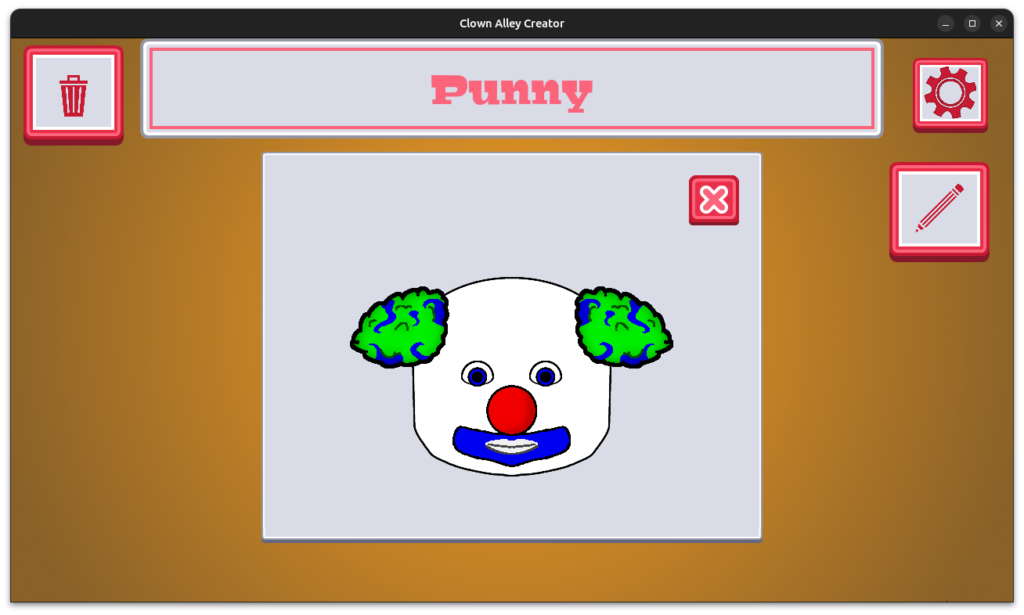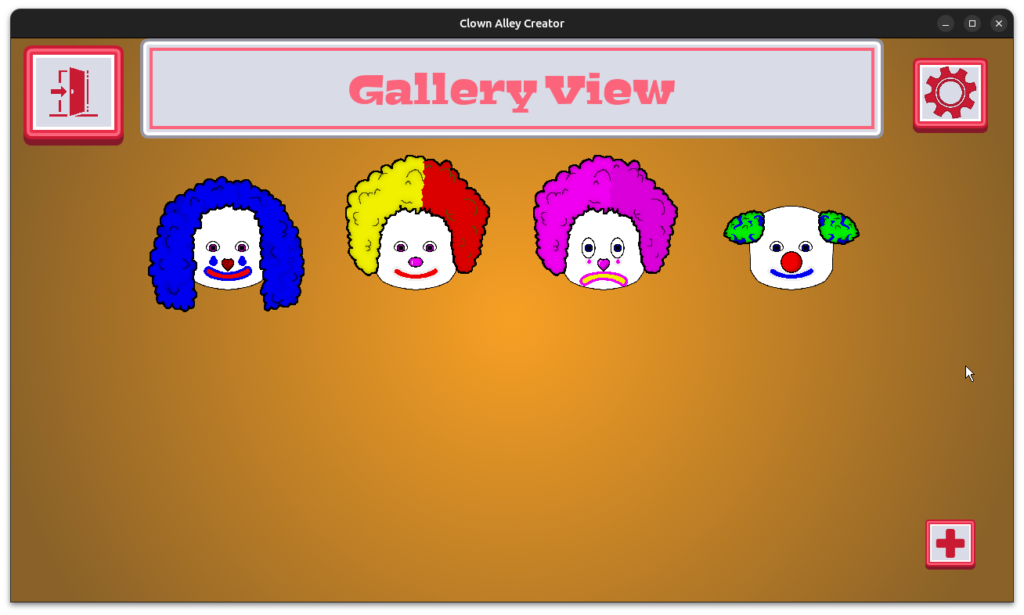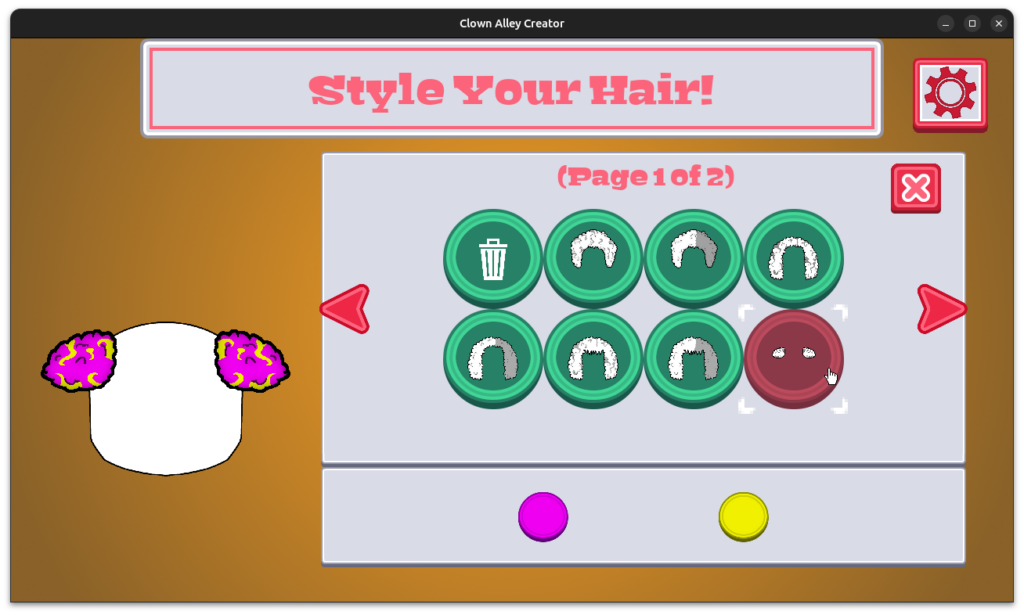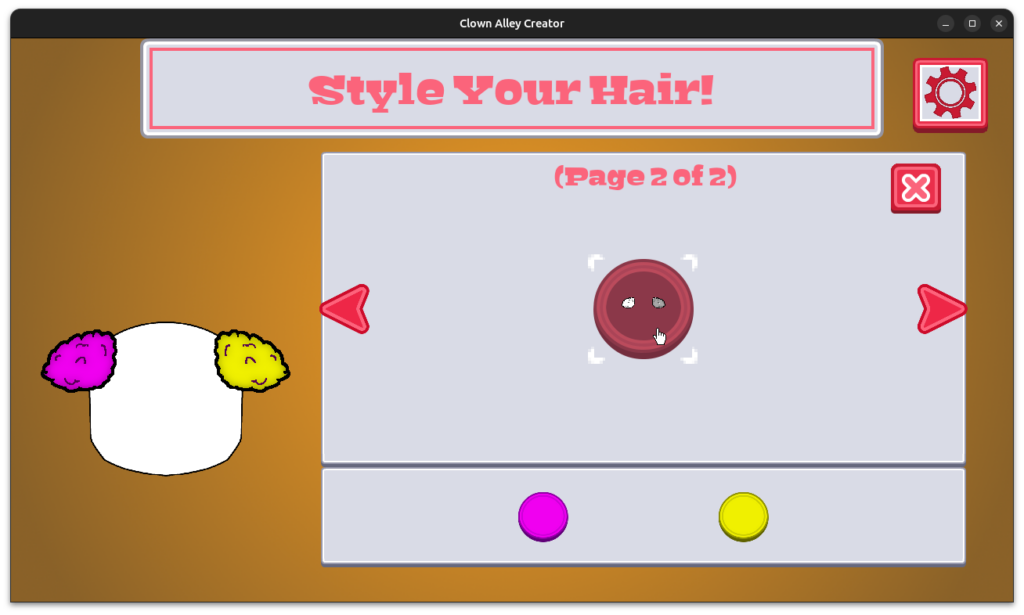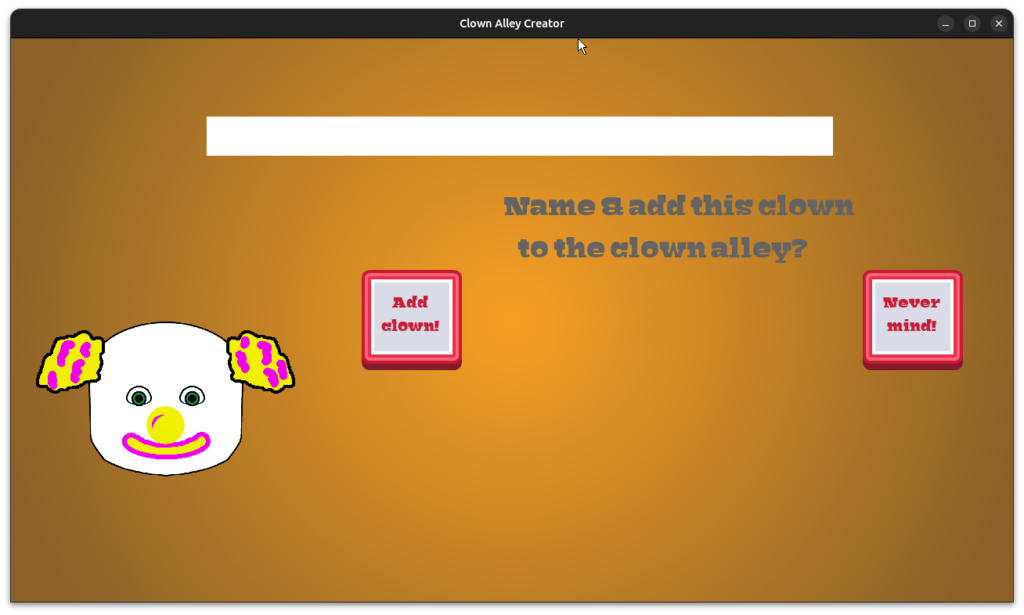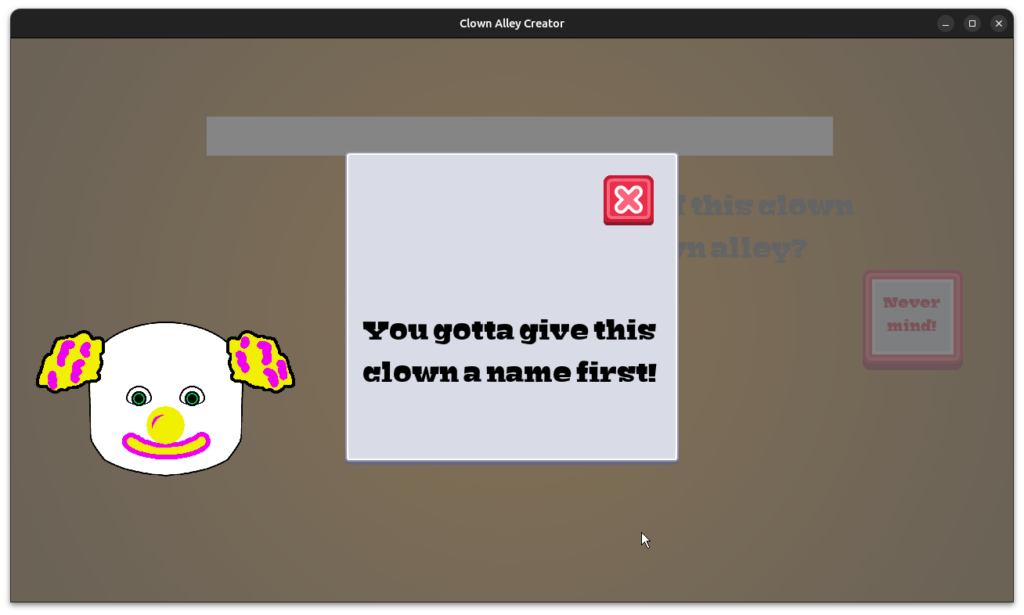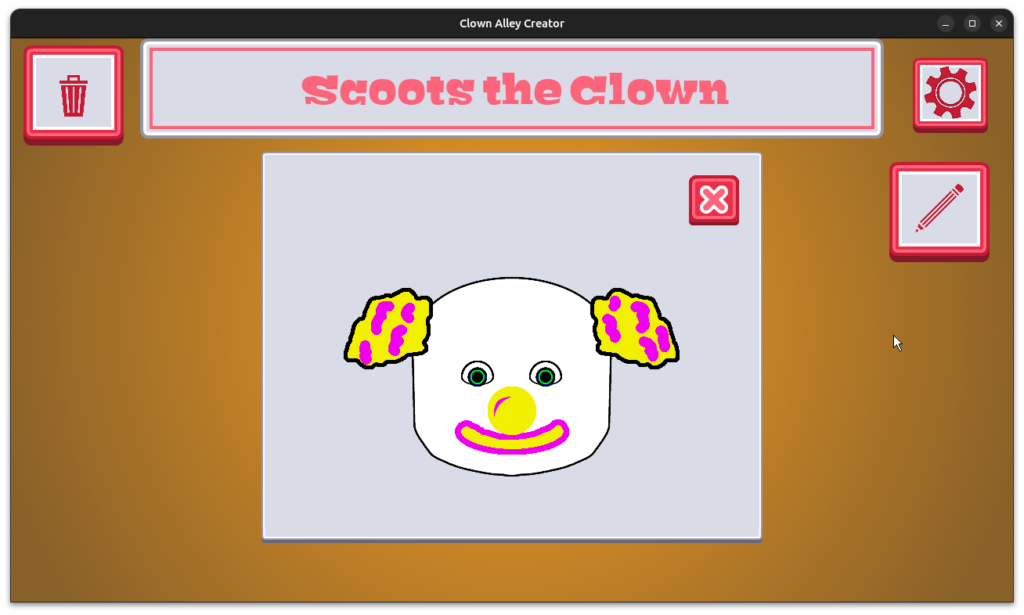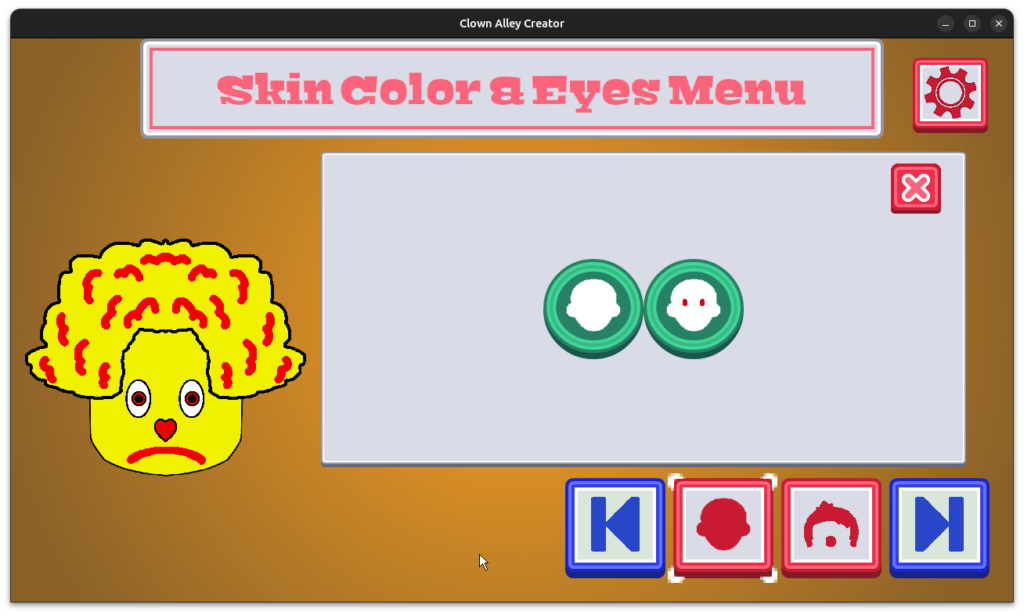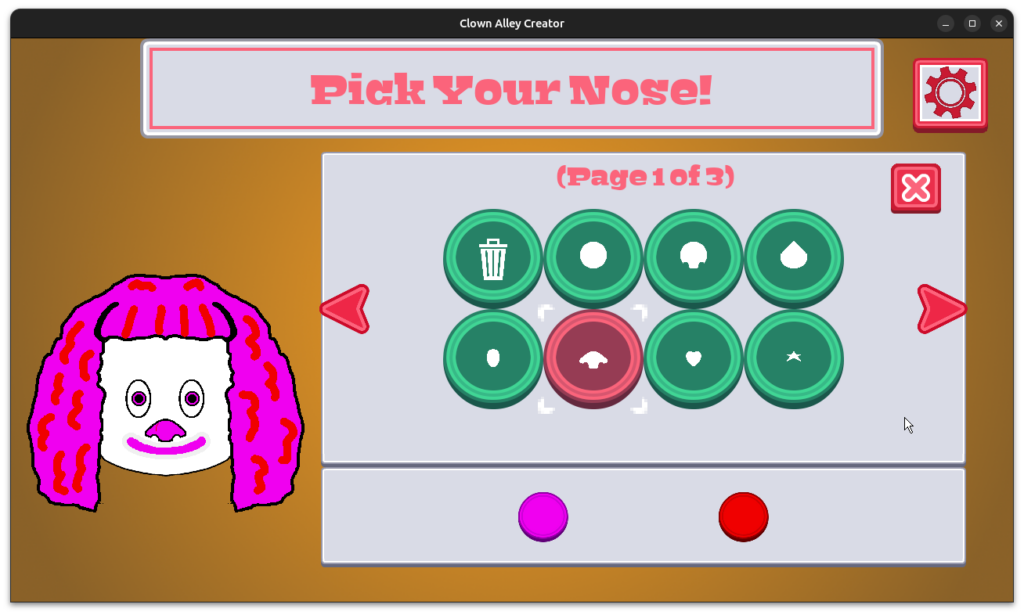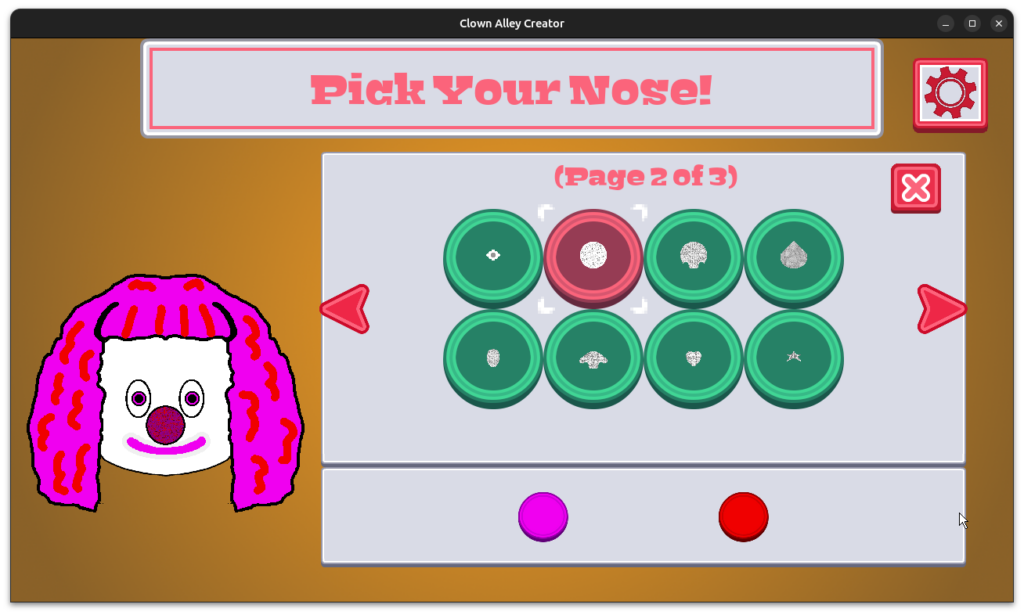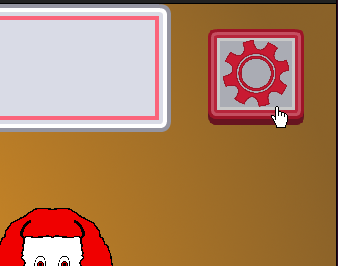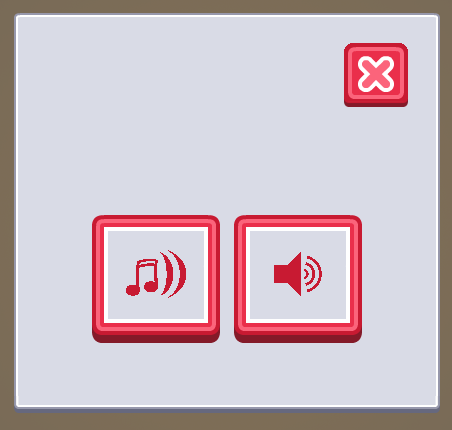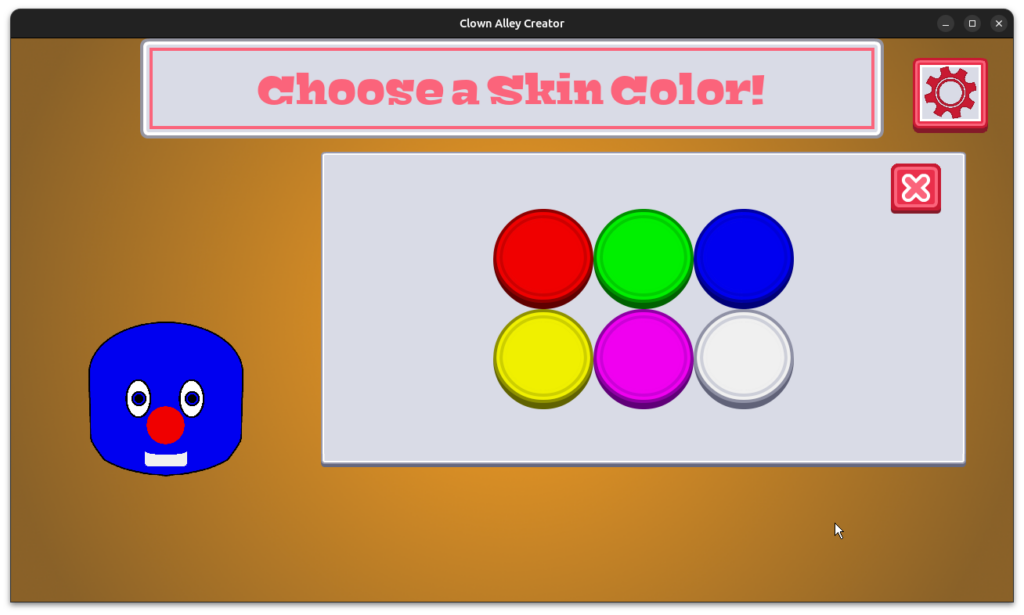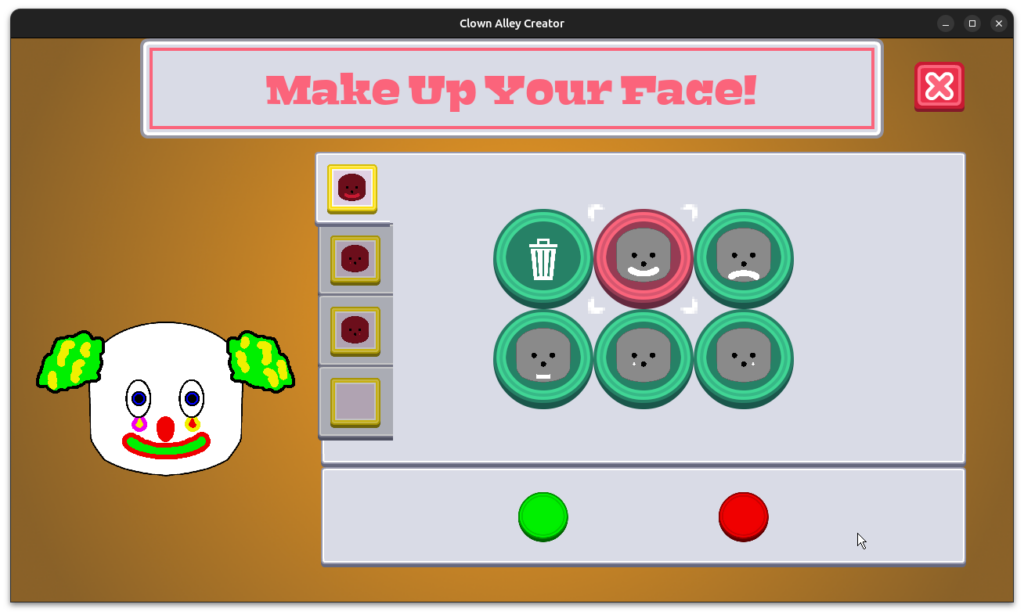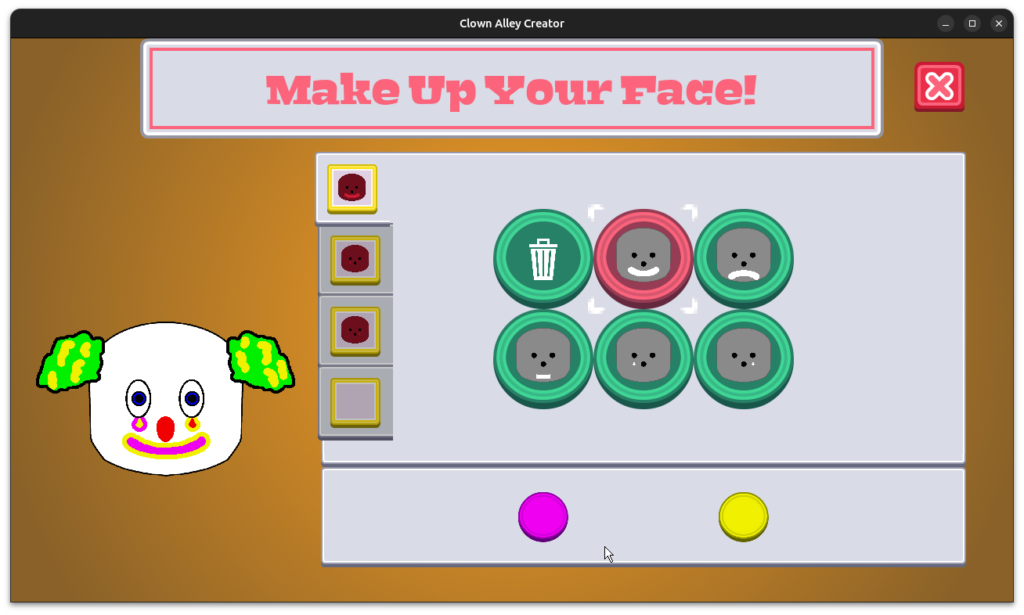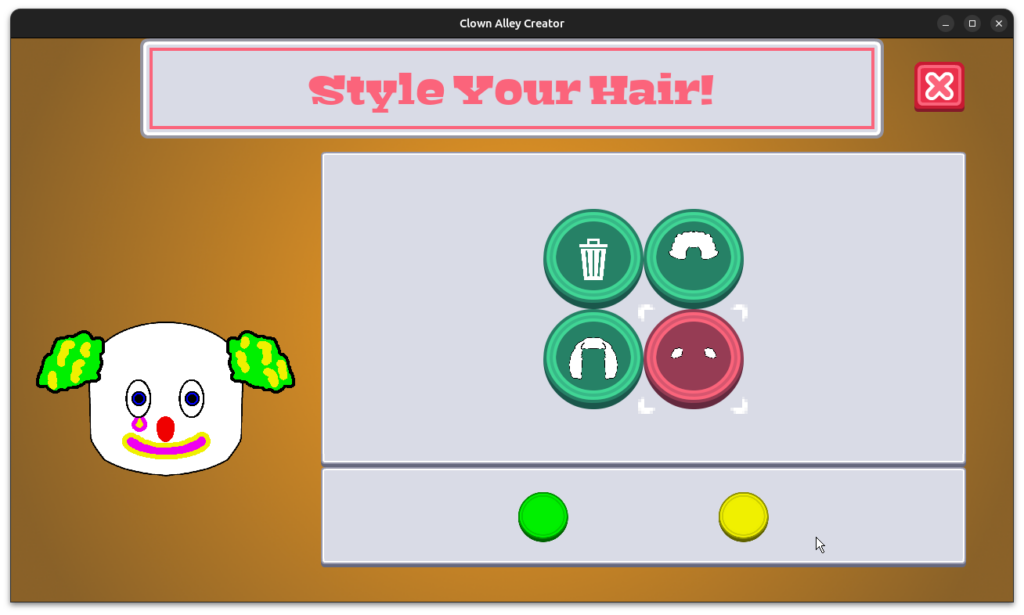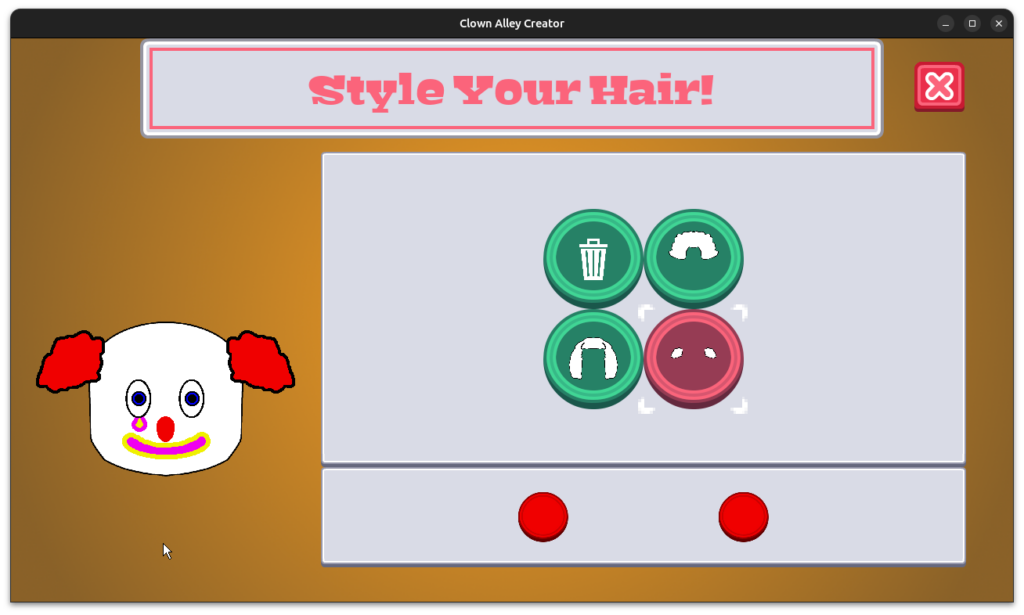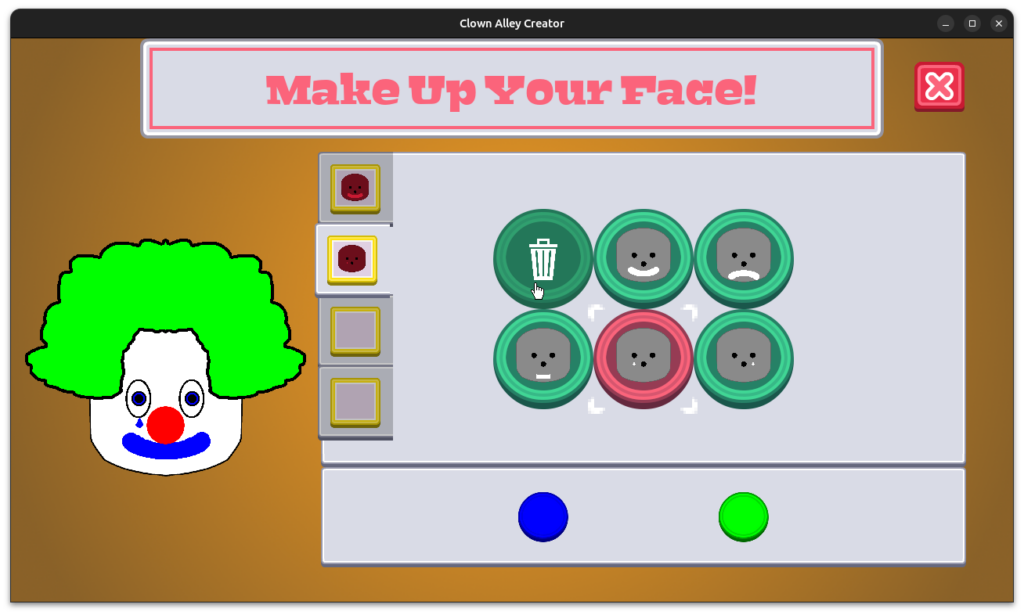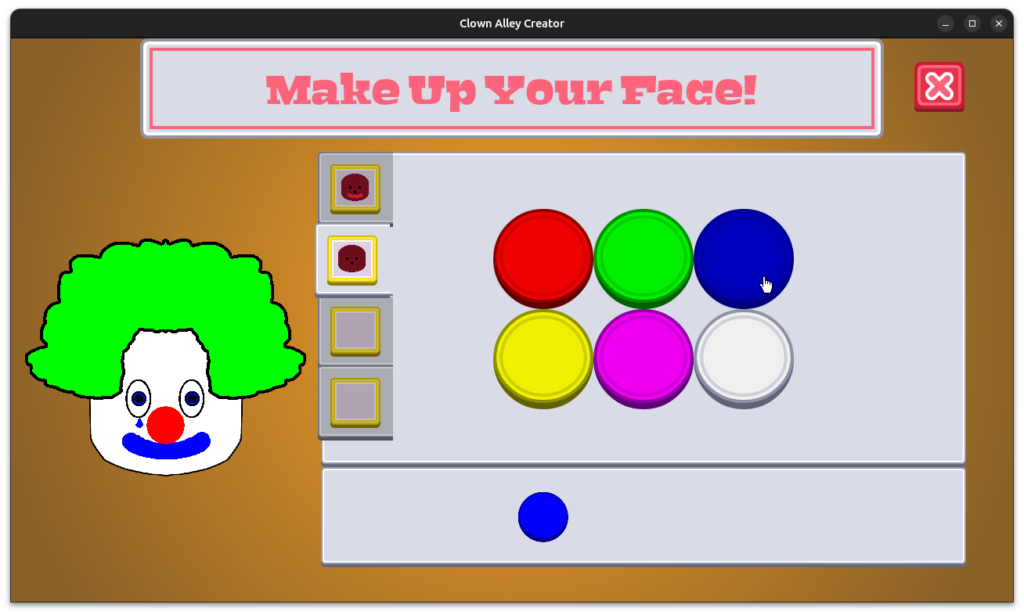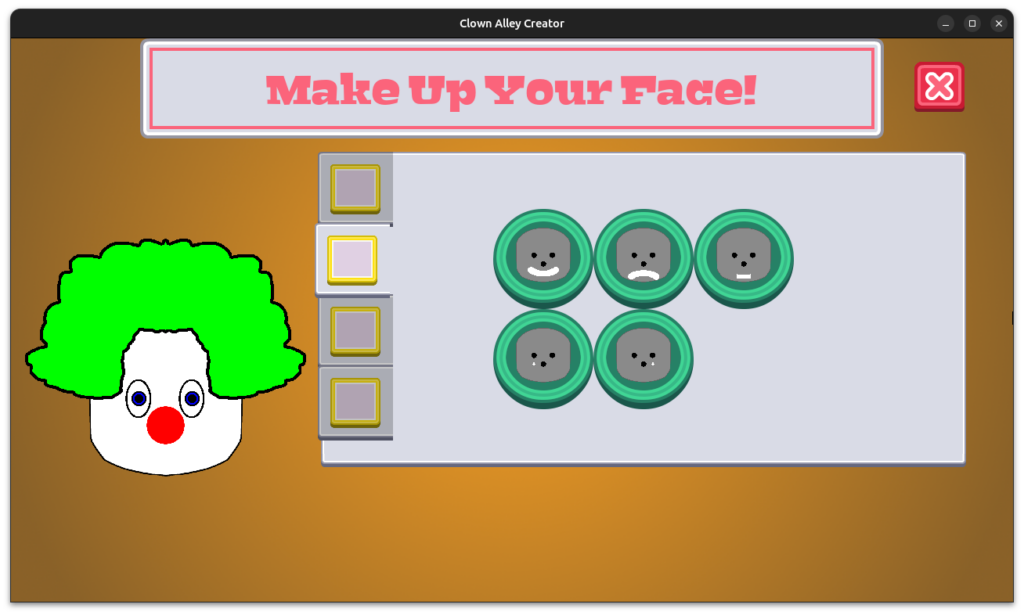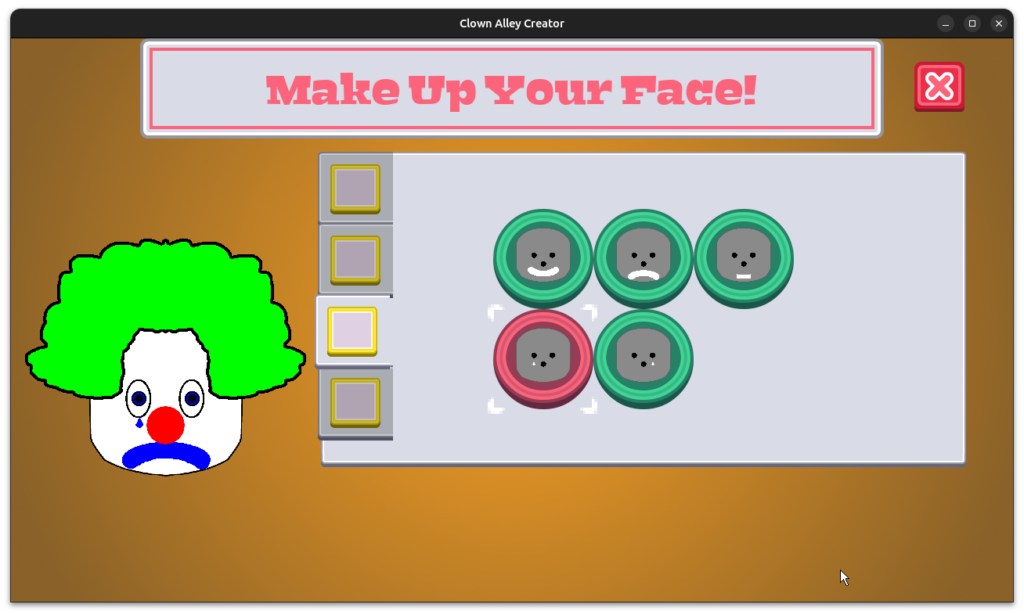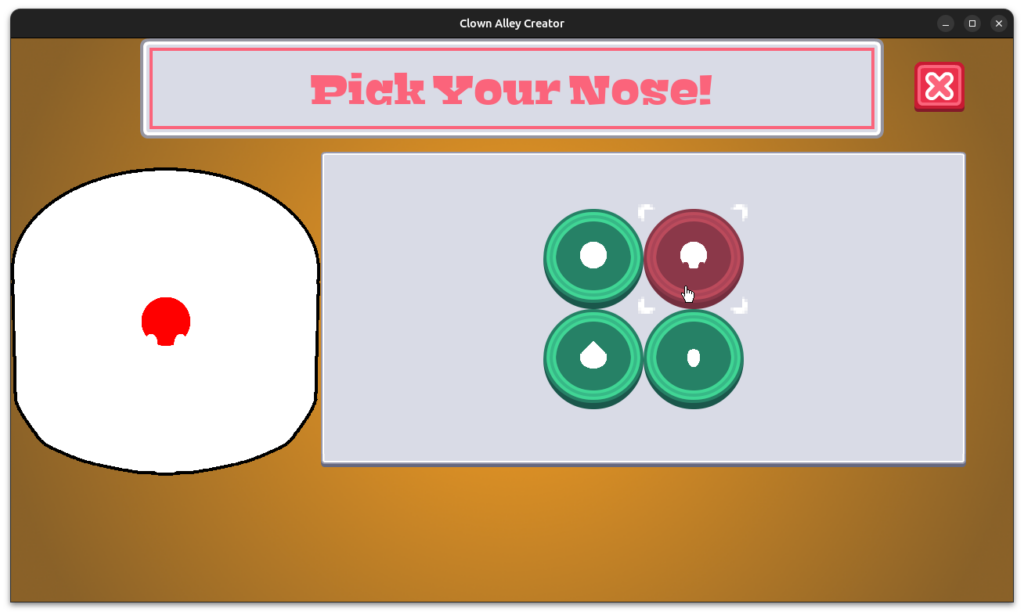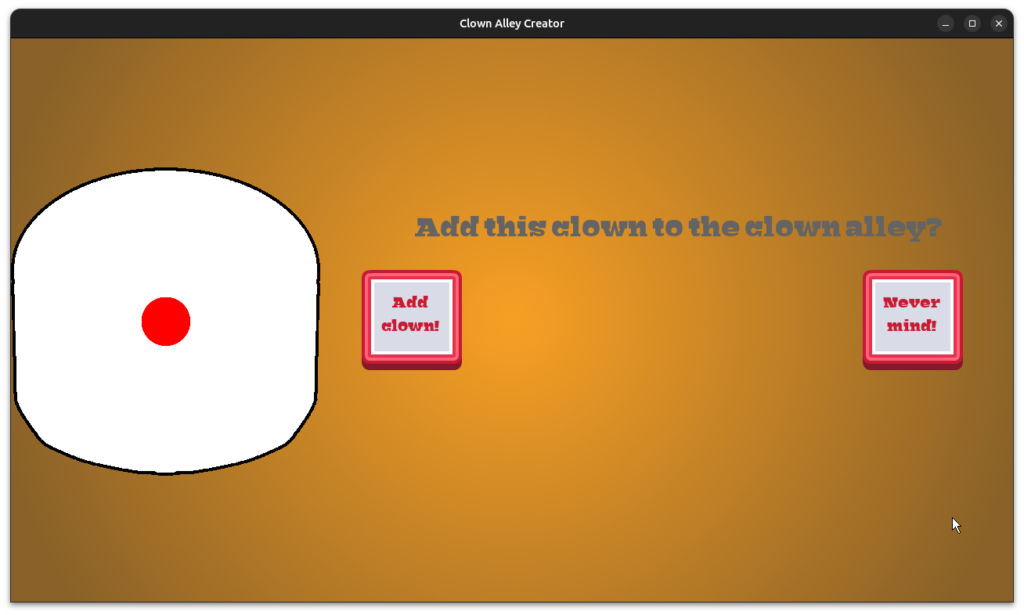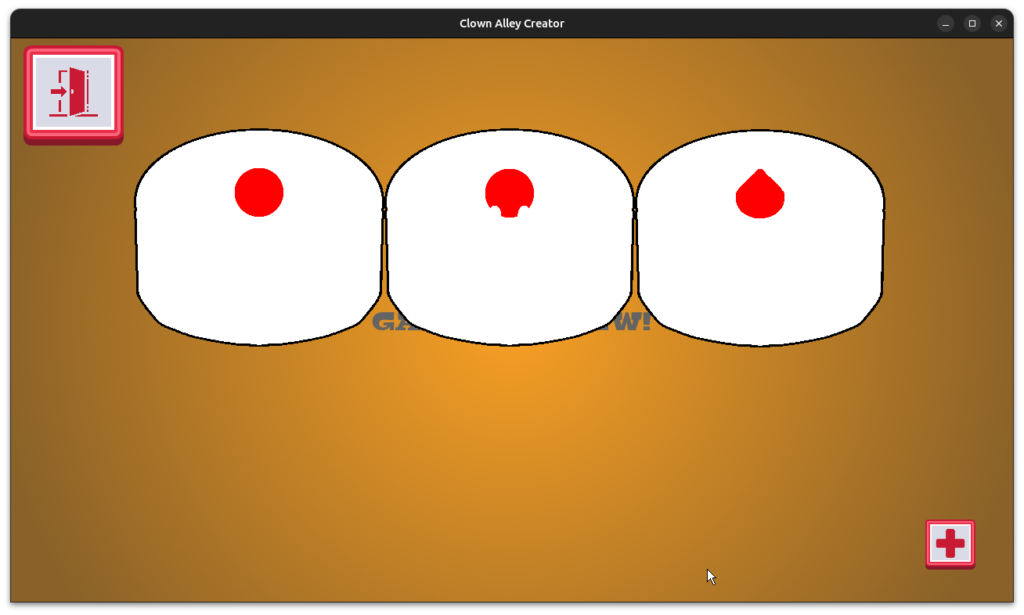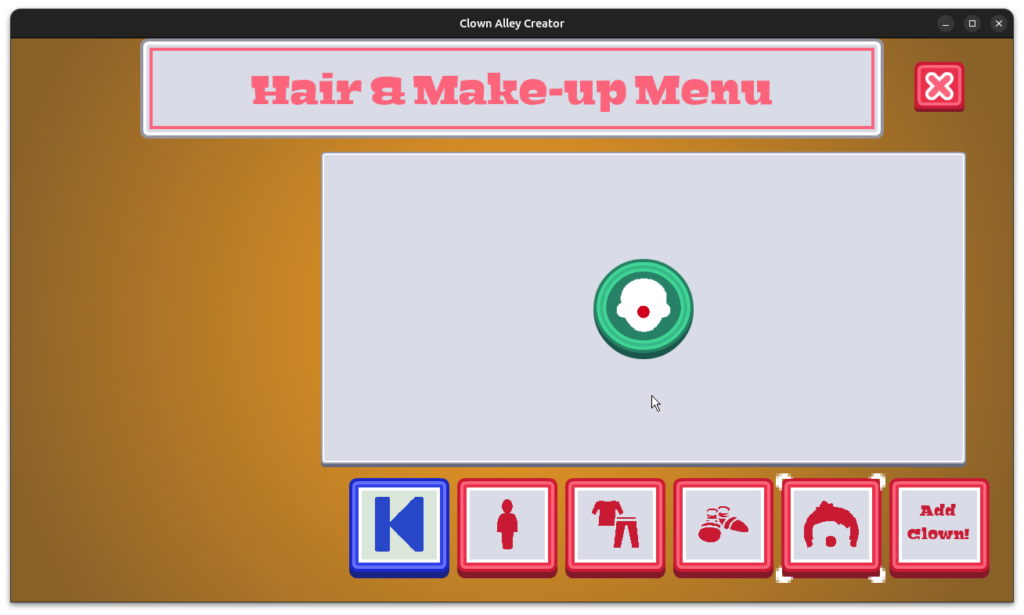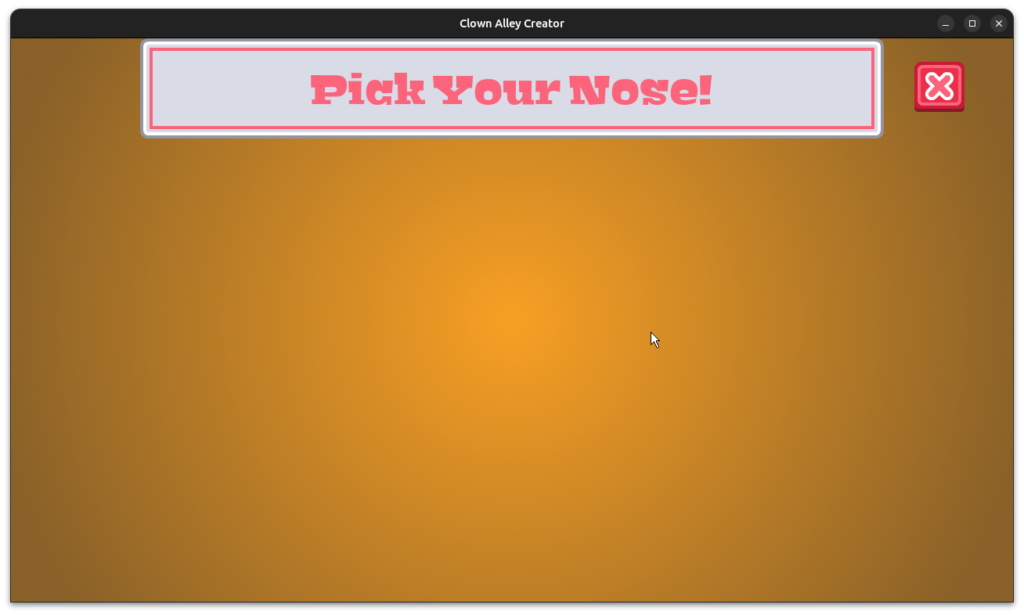In my previous report, I got the spine finished for my second Freshly Squeezed Entertainment project called Clown Alley Creator, a creativity tool about creating your own fun clowns.
I continued to build upon the work, focused on finishing the Gallery view and adding hair in the Creator mode.
Sprint 2024-6: Clown Faces
Completed:
- Paginate gallery view
- Create Clown Specific View
- Delete clown
- Create Hair & Make-up menu
- Create hair option and submenu
- Create clown preview hair cut-outs
- Create Clown Specific View
As I said last time, I pretty much have everything in place that the player might do.
And yet, there is always something to enhance or improve.
For instance, the Gallery View allowed you to see 12 clowns at a time…but only the first 12 clowns.
So I added pagination in order to see more of them.
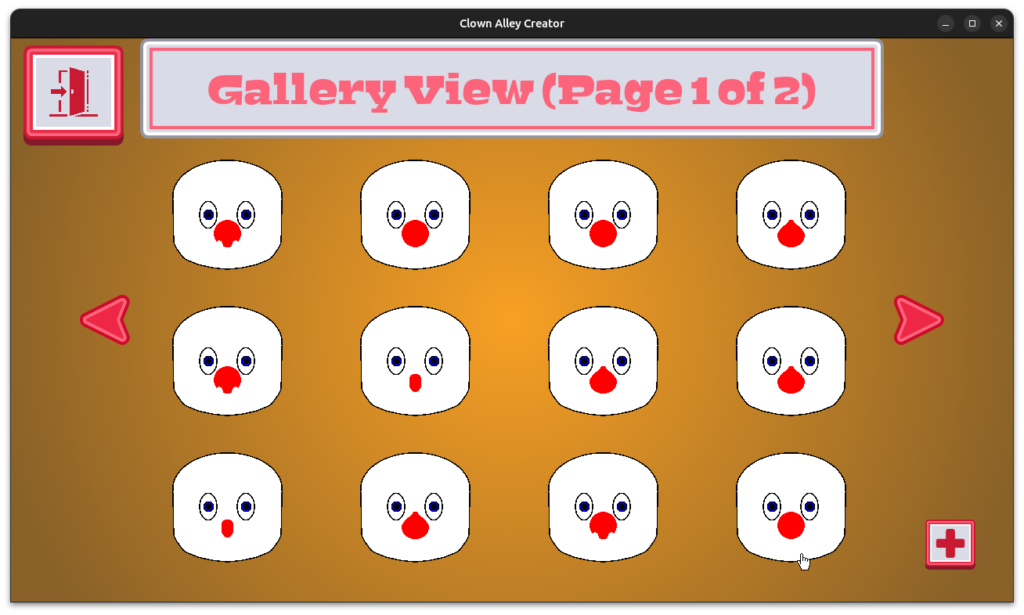
You may also notice that I added eyes to the clown faces. It was getting weird not having eyes, and while eventually I’ll let the player select eye options as well, for now it looks less strange.
Since you can add new clowns, you should be able to edit and remove clowns, so I added a close-up clown view with those options.
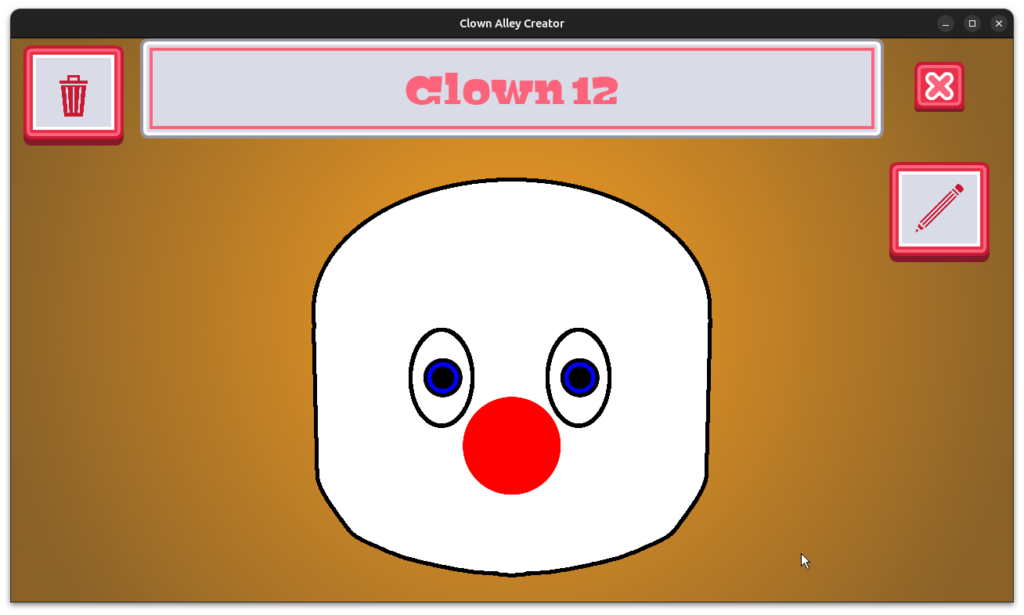
Eventually you will be able to name your clowns and see that name instead of something like “Clown 6” in the title bar.
Editing just opens up the clown creator mode with the existing clown’s settings instead of a completely new clown. I’m very happy with how easy it was to do. In fact, I feel like this project has been surprisingly smooth sailing in terms of writing just enough code to not be wasting time while also writing good code that is easy to expand and extend.
Anyway, finally I added the hair menu. I had some concerns about how to actually implement hair. Clown hair/wigs can be quite wacky, extending quite a ways from the clown’s head, and I wasn’t sure how to approach it. Do I create separate sprites for the top and sides?
For now, I’ve created larger sprites. Basically, the head shape is one size, and the hair sprite is much larger, which allows for the hair to be fairly big if it has to be while also covering any part of the head that needs to be covered. Here are my mock-ups:
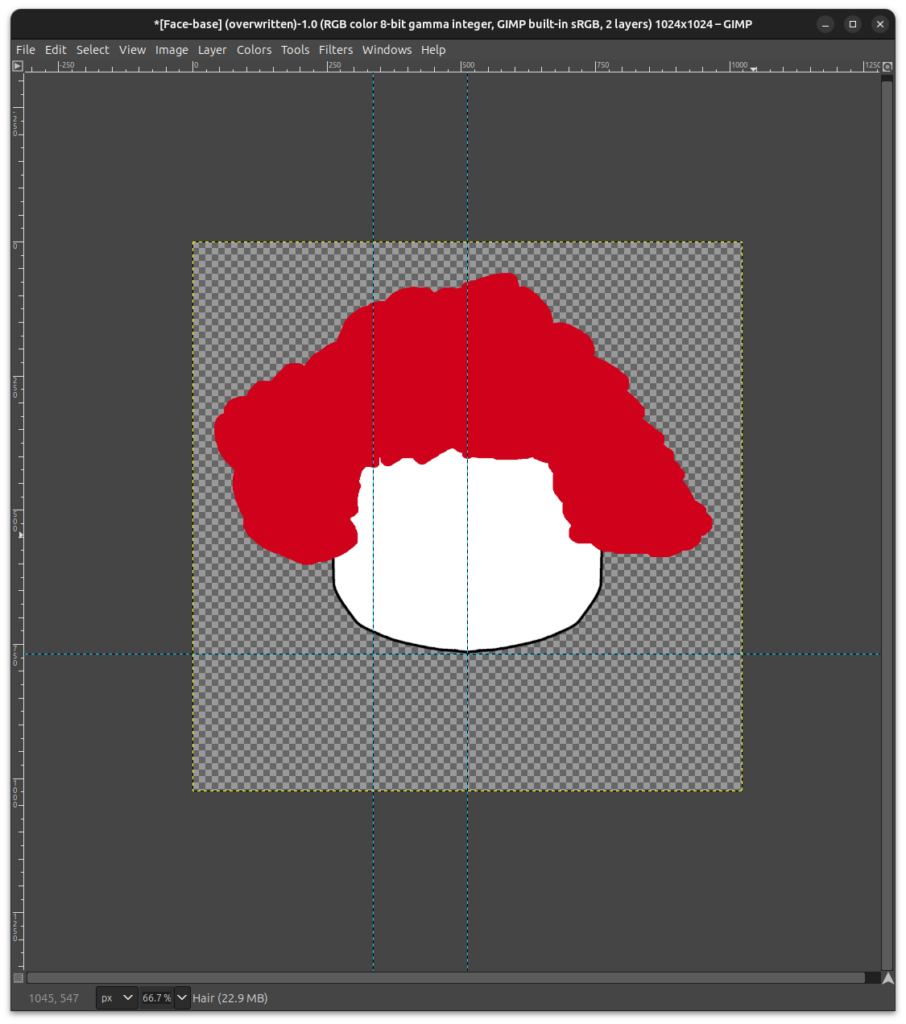
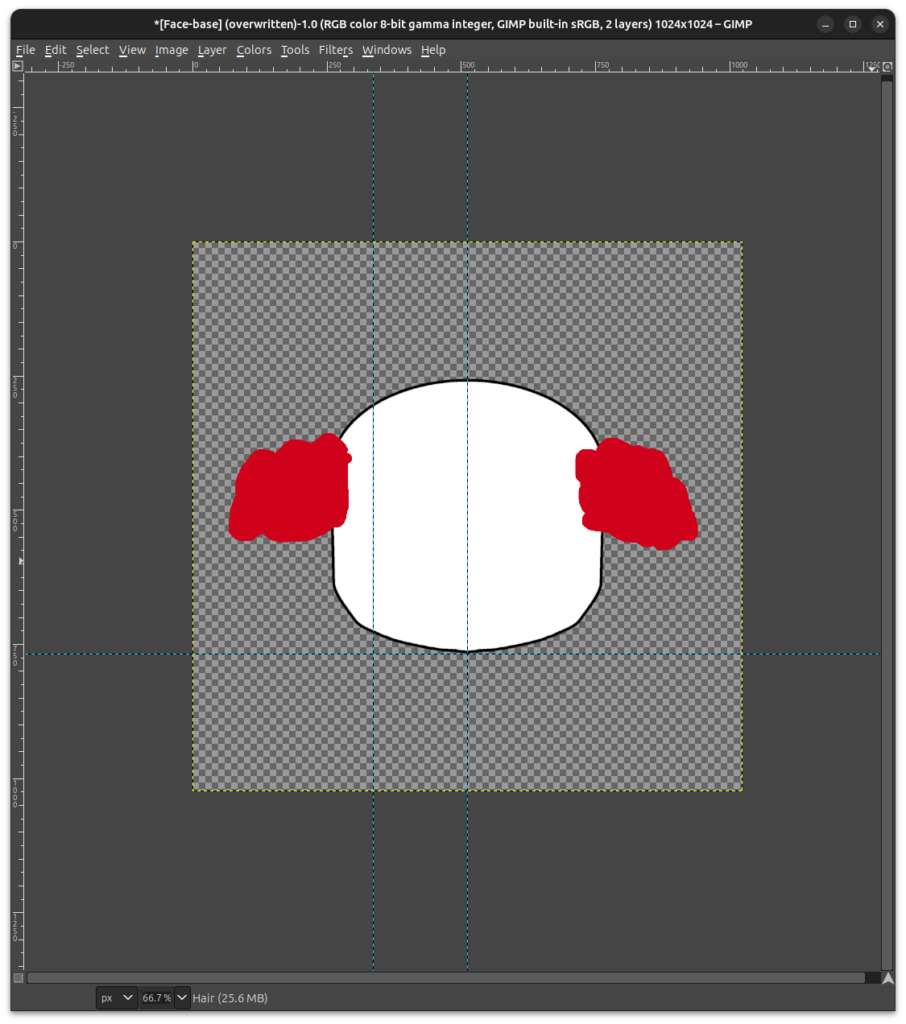
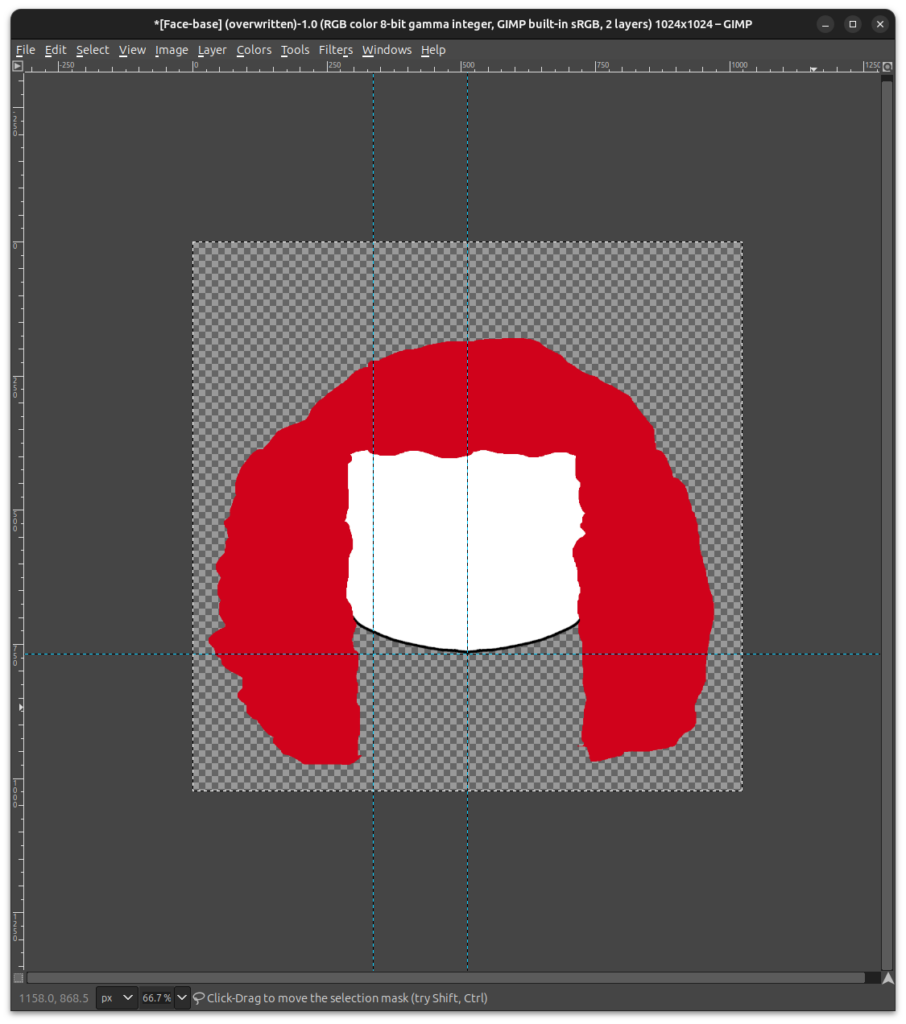
And here they are in the Gallery view:

I ended the week getting started on the make-up menu, but I was also trying to figure out how to allow the player to customize colors for various options.
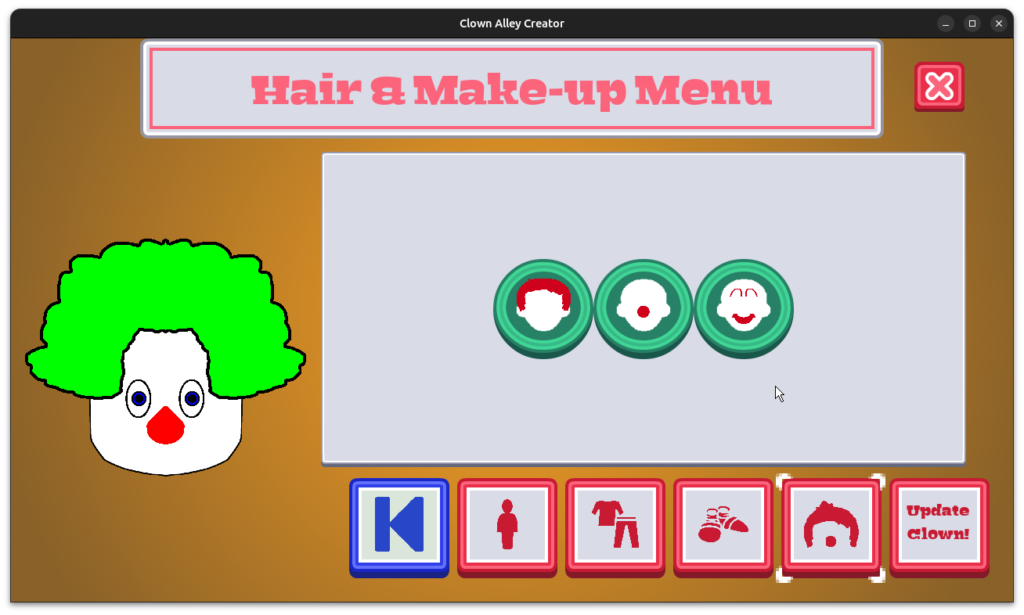
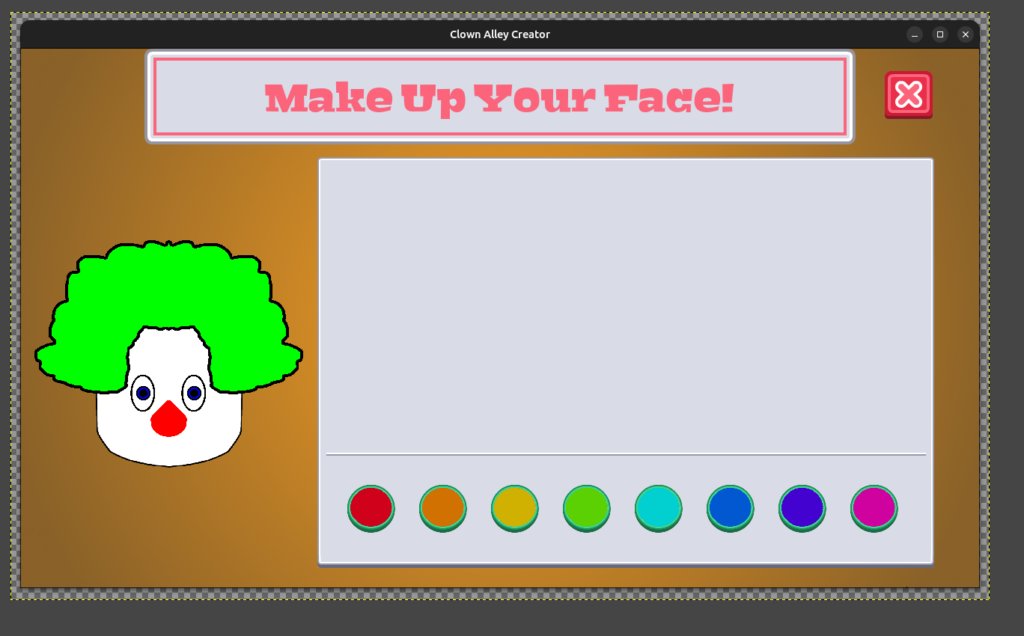
Clown noses should not just come in red, and I think being able to choose primary and secondary colors for hair would be great, too.
But I feel like choosing colors is getting ahead of myself, so that’s on hold for the moment.
The biggest thing I’m trying to figure out is how to implement make-up. I’ve already decided to allow the player to do so in layers, which means making it clear which layer they are working on as well as the ordering of those layers. I mocked up this tabbed view, with the idea that you are currently selecting options for a given layer, and I think it should be intuitive that the layers are applied in order from top to bottom.
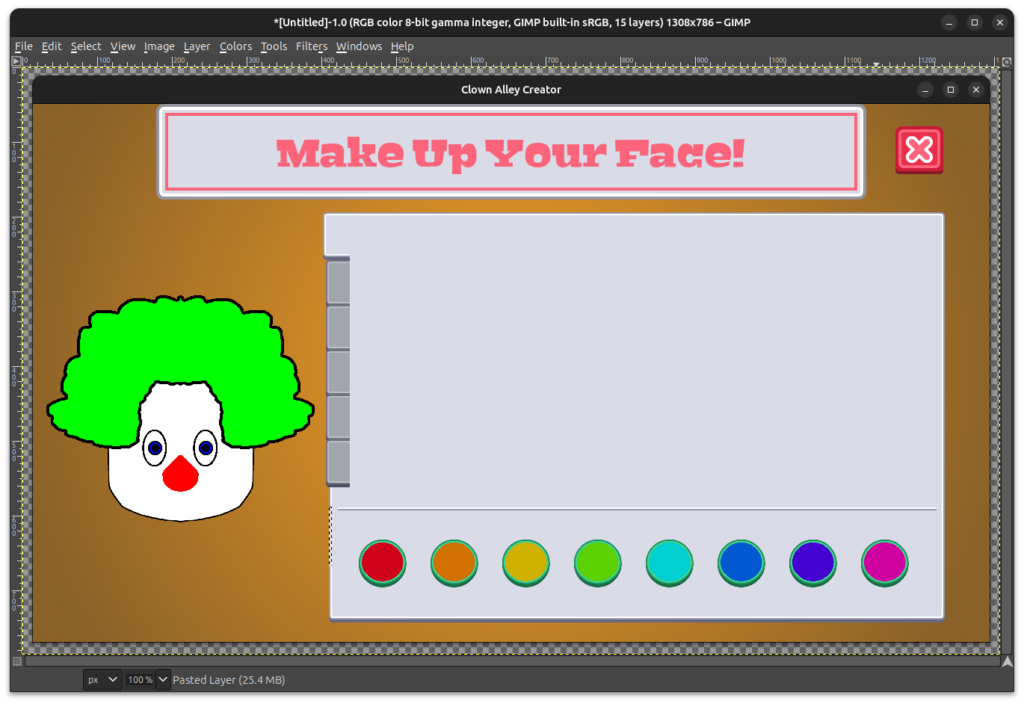
I need to do more work on this menu’s design. I expect it would be nice to move layers up and down, which means I need space for buttons to allow for it. I like buttons because expecting the player to know something like drag & drop is an option is harder to communicate, and I think too many modern UI elements are inexplicably hidden from the player, presumably to keep the interface looking cleaner or something.
It’s been a joy to see this project get more and more finished while at the same time feeling like it is always in a good state to be considered done. Last week you could customize noses for your clowns, and this week you can pick clown noses and hairstyles. Assuming I have time to work on the project as we head into the deepest parts of the holiday season, I expect to make it possible to choose make-up options in layers after this coming week, and after that point I’ll introduce color options. Each week, I’ve managed to make the game richer and fuller.
Of course, there is a difference between something being “technically” releasable and something being “marketable.” It is not unusual for projects to struggle with or even ignore being able to create a release until the very end of the schedule, so I feel really great about the way this project has been going.
I anticipated that December would be a slow month for me so part of my schedule assumes I’ll be working on these mock-ups and figuring out flows into January. Even so, I’m impressed with what I’ve put together in just the last couple of weeks. Soon after I’ll switch my focus to creating lots of options for each submenu, allowing a player to create potentially thousands of unique clowns using the existing menus. Then I’ll be polishing things up, testing things, and getting it ready for an official release.
Thanks for reading, and stay curious!
—
Want to learn about future Freshly Squeezed games I am creating? Sign up for the GBGames Curiosities newsletter, and download the full color Player’s Guides to my existing and future games for free!

